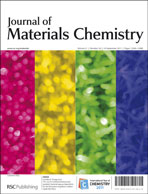Bioactive glasses (BGs) are thought to be promising materials for bone tissue repair and regeneration because of their osteoconductive, osteoproductive and osteoinductive properties. Comparing with melting bioglass, sol–gel bioactive glasses (SGBGs) have been developed for bone tissue regeneration as they have the unique micro-nanoscale structure and high bioactivity in vitro. In this paper, we fabricated bioactive glass microspheres (BGMs) by a sol–gel-polymer template technology, and firstly studied the effects of morphology on their properties (physical–chemical, apatite-forming and biological properties) in detail. The surface morphology and structure, degradation, apatite-forming bioactivity and biocompatibility of BGMs were evaluated. The results revealed that the BGMs have a uniformly spherical morphology (2–6 μm in diameter) and improved amorphous structure. Comparing with irregular bioactive glass (IBG), BGMs showed slow and stable silicon release kinetics and pH stability in simulated body fluid (SBF). More uniform and needle flake-like apatite was formed on the surfaces of the BGMs. The attachment and proliferation of human marrow mesenchymal stem cells (HMSCs) cultured on the surfaces of BGMs in a short time were significantly higher than on IBG. HMSCs’ osteogenic differentiation was enhanced significantly by the BGMs, as implied by ALP activity, without adding any inducing factor, compared with IBG. Thus, BGMs possess excellent physical-co-chemical and biological properties, exhibiting their potential applications in bone tissue regeneration and drug release systems.

You have access to this article
 Please wait while we load your content...
Something went wrong. Try again?
Please wait while we load your content...
Something went wrong. Try again?


 Please wait while we load your content...
Please wait while we load your content...